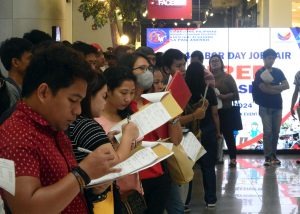The four-country Brunei-Indonesia-Malaysia-Philippines-East Asean Growth Area (BIMP-EAGA) is looking at maximizing their transport networks so they could turn these into economic corridors.
A joint press statement at the end of their summit in Bangkok, Thailand Sunday, leaders of the four countries said they “strongly support area-based cooperation in priority points along the economic corridors, which offers the greatest potential for attracting trade, tourism and investment, and which will yield long- term social, environmental and economic benefits.”
“We encourage officials to identify investment needs and opportunities in these areas based on inputs from state and local governments, the private sector, and local communities to ensure maximum impact,” they added.
Last week at the Davao Investment Conference here, the Mindanao Development Authority (MinDA), the agency that represents the Philippines in the sub-regional group, announced the revival of the shipping route between the city and Bitung in Indonesia via General Santos City.
In a speech read for him by MinDA Investment Promotion and Public Affairs Office Director Olie B. Dagala, MinDA acting chair Nathaniel D. Dalumpines said there is a need to sustain the route as it “puts premium on Mindanao’s strategic location to the BIMP-EAGA, and the larger ASEAN (Association of Southeast Asian Nations).”
The new vessel, which has a maximum capacity of 200- Twenty Foot Equivalent Unit (TEU) capacity, is set to arrive here on July 6, about 20 days after starting its sailing from Bitung on June 16.
The servicing of the shipping route hit a snag after the first company, which used a vessel with a capacity of 500 TEUs, failed to sustain operations due to the lack of cargo. The route was launched in April 2017 here with President Rodrigo Duterte and Indonesian President Joko Widodo leading the event.
The leaders of the sub-regional group also said that another essential element in ensuring the growth of the sub-region is the “quality, seamless, multi-modal infrastructure” as this will facilitate the movement of goods and people.
“We are greatly pleased with the substantial improvement and expansion of the multi-modal transport network in our sub-region,” they said as the pointed out that there have been key infrastructure facilities that have been built and have provided market access like roads and ports.
They also “firmly believe that traditional trade links, which continue to thrive and serve as a main driver of our cooperation, are vital in promoting livelihoods and commercial exchanges in our sub-region” as they urged to continue enhancing the barter trading between and among them.
To enhance this form of trading, the four countries also cited the signing of the ASEAN Memorandum of Understanding on the Improvement of Safety Standards and Inspection for Non-Convention Ships within ASEAN Member States and the adoption of the Guidelines for Safety Standards for Non-Convention Ships on November 9, 2018 as these steps will help “facilitate and promote cross-border maritime safety, expand maritime trade, and improve the sustainability of barter trade.”
They also reported that the 25-year old group has taken significant achievements as its economic expansion reached by about 5.7% to $287.3 billion in 2017with merchandise trade hitting a higher 21.5% growth.
Tourism, on the other hand, reached about 88.2 million visitors that year, or a 6.6% increase compared with the previous year, while they got in about $20 billion in both foreign and local investments that year.


